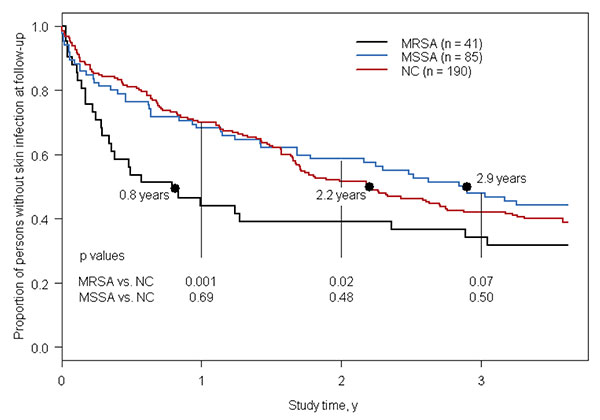Volume 16, Number 5—May 2010
Research
Methicillin-Resistant Staphylococcus aureus Carriage and Risk Factors for Skin Infections, Southwestern Alaska, USA
Figure

Figure. Kaplan-Meier survival curve of time until first skin infection among methicillin-resistant Staphylococcus aureus (MRSA), methicillin-susceptible S. aureus (MSSA), and non–S. aureus carriers (NC). Black dots and associated text show the median time to first skin infection for each of the 3 groups.
Page created: December 23, 2010
Page updated: December 23, 2010
Page reviewed: December 23, 2010
The conclusions, findings, and opinions expressed by authors contributing to this journal do not necessarily reflect the official position of the U.S. Department of Health and Human Services, the Public Health Service, the Centers for Disease Control and Prevention, or the authors' affiliated institutions. Use of trade names is for identification only and does not imply endorsement by any of the groups named above.